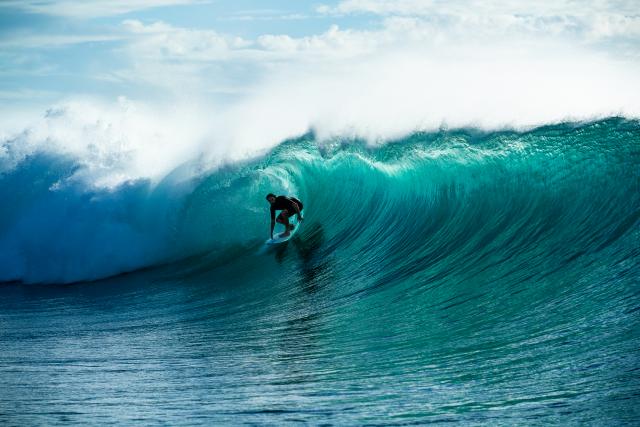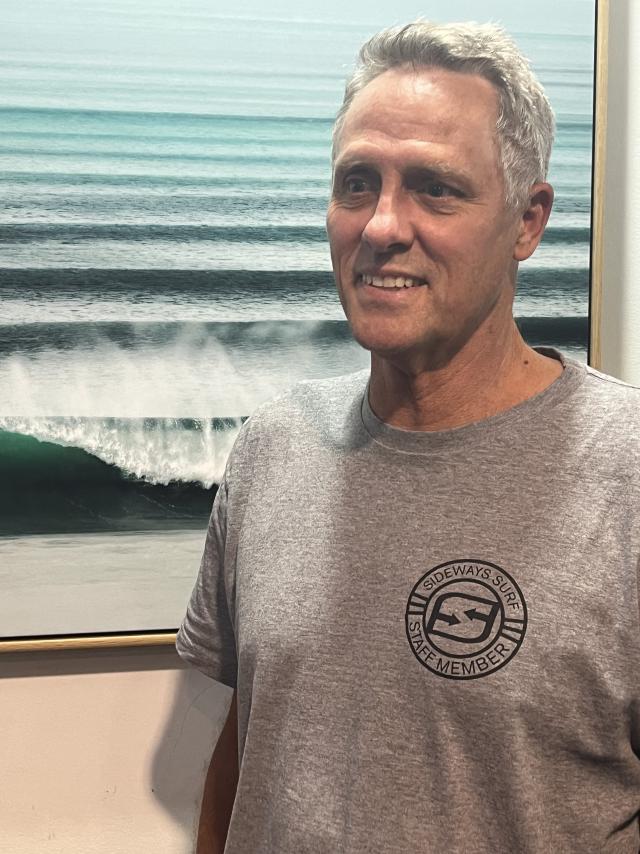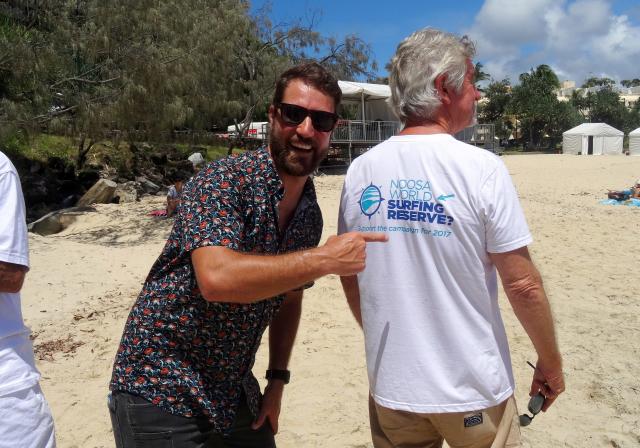
Noosa World Surfing Reserve has taken the first steps towards the creation of a Surf Protected Area Network (SPAN) covering all of the beaches of Noosa Shire.
The move comes after more than three years of the reserve’s stewardship council working on projects whose application and relevance has spread beyond its boundaries, designated when Noosa was dedicated as the 10th World Surfing Reserve in February 2020.
These include surf etiquette and safety awareness and education programs, surf safety education for local schools, and defibrillator installation from the river mouth to Alexandria Bay, in conjunction with Noosa Heads surf club and other stakeholders and community donors. This important life-saving program, benefitting all users of the coastal walkways, bays and beaches, not just surfers, is now spreading shire-wide.
“The main reason for creating a SPAN is to address the idea that we are only concerned with what goes on within the World Surfing Reserve boundaries,” NWSR vice president and one of the architects of the new network, Michael Court told Noosa Today.
“In fact, most of what we do has a broader application, and involves working closely with shire-wide community organisations, like Noosa Biosphere Foundation, so it made sense to us to join up with a global network which can provide huge resources in research and data collection.”
The creators of the SPAN, US-based Save The Waves Coalition, also manage the now 12 existing World Surfing Reserves, with the dedication of UK’s North Devon WSR due today, 12 May.
Last week STW gave a green light to the creation of a Noosa SPAN, the first to be established in conjunction with a World Surfing Reserve, while the NWSR stewardship council voted unanimously in favour of the project.
The Save The Waves Coalition is an international not-for-profit that works with diverse organisations dedicated to protecting surf ecosystems. Based in Santa Cruz, California, STW draws much of its funding from foundations set up by tech industry leaders in nearby Silicon Valley.
Launched in 2003, it is the only international organisation solely dedicated to protecting surf ecosystems around the world.
As STW notes in its 2020-25 strategic plan: “We mobilise people to protect the places they love.”
The STW mission statement says: “We believe that legally protected areas, effective stewardship and a mobilized constituency result in healthy and protected surf ecosystems. We create protected areas through our flagship World Surfing Reserve program and Surf Protected Area Networks. We manage projects around the world and encourage coastal stewardship through. We mount international campaigns to defend surf ecosystems under threat and inspire the public to take action.”
The current strategic plan also outlines “our ambitious new global goal to protect 1000 surf ecosystems by 2030, which will require new approaches to scale STW’s already impressive conservation wins.”
SPAN will play an important part in making that happen.
Although there is still a significant waiting list of applications for consideration as World Surfing Reserves, STW says the designation will be applied to a finite number of surfing destinations and since 2020 it has increased its focus on SPAN, which it explains as “a new approach for marine and coastal conservation that combines the legal protection of ecosystems with sustainable community development.
Save The Waves implements this program across the globe on a national level in Costa Rica, The Azores, Mexico, and Chile in coalition with local partners.”
In Noosa, Mick Court sees the first step in establishing a SPAN as defining and clearly mapping the boundaries of the Noosa World Surfing Reserve, then building the SPAN around the remaining shire beaches not currently covered – the Eastern Beaches from Sunshine Beach to Peregian, and Teewah Beach on the North Shore.
Says Mick: “Creating a SPAN is a recognition of what we’ve been doing for several years, but what comes with it is the systems and data collection of a global concept. Before we take a project on, we will be able to look at the SPAN data bank and see how similar situations have been dealt with in other parts of the world.
“For example, Burgess Creek and the sand movement in Laguna Bay are both big issues affecting the quality of waves and the general amenity, and they would both be candidates for SPAN research and data collection.
“What we want to create is a formal structure to identify the boundaries of the SPAN in conjunction with the boundaries of the World Surfing Reserve.
“This will be the first time a SPAN has operated in tandem with an existing World Surfing Reserve, although some of the others may one day become world surfing reserves. But Save The Waves Coalition, which manages both WSRs and the SPAN project, sees this as a great model for the future, with both entities feeding off each other.
“SPAN will enable the NWSR to align with biodiversity and climate change targets and work with existing stakeholder groups, as well as initiating its own, giving surfers a voice on a wider range of issues across the shire.”
Mick said overcrowding in the waves due to surf tourism was having the broader community effect of pitting people, young and old, against each other in and out of the water.
“It’s reached a point where it doesn’t just impact surfers, it can almost suffocate the whole town. Not only does the sheer volume of people affect the ability to enjoy surfing, but it has a social impact which drives lifelong surfers away from their sport and creates friction between groups and individuals who have been friends for years.
“Lately if there is aggression in the water, it’s not necessarily locals versus tourists any more. It’s just as likely to be between two locals.
“I don’t think that SPAN can necessarily resolve that, but it can go a long way towards explaining and highlighting what the threats and issues are so that we can all think more clearly about the impacts of what we’re doing.”
Mick said a good example of what a Noosa SPAN could do was in data capture needed to analyse and quantify surf overcrowding.
“We know there are a lot of people in the water but we don’t know how many and at what times, other than the traditional peaks during school holidays. But that’s all changed, largely due to improved wave forecasting and greater flexibility in the workplace.
“Ahead of a forecast swell event, it’s not uncommon for several thousand people to descend on Noosa, and we have no strategies in place to deal with it. At NWSR we’ve already been working on a project involving artificial intelligence interpretation of real time photographic data of the surf breaks, not to be published anywhere but purely for analysis. “That will become a SPAN project, once fully assessed, and hopefully feed important information into traffic and parking issues within destination management planning and in time a surf management plan for the Noosa Shire.
“But in order for that to happen we need to establish some form of formal recognition and boundaries from council and state government, along with a process for working with them and feeding them information.”








